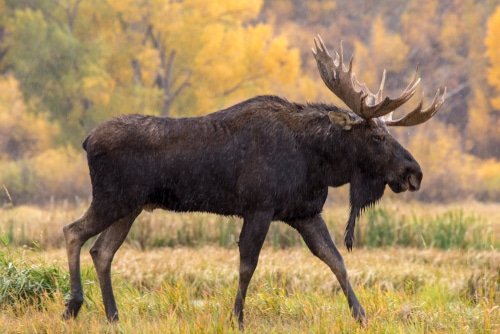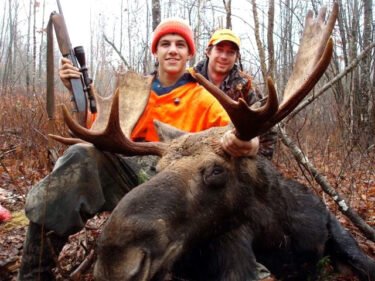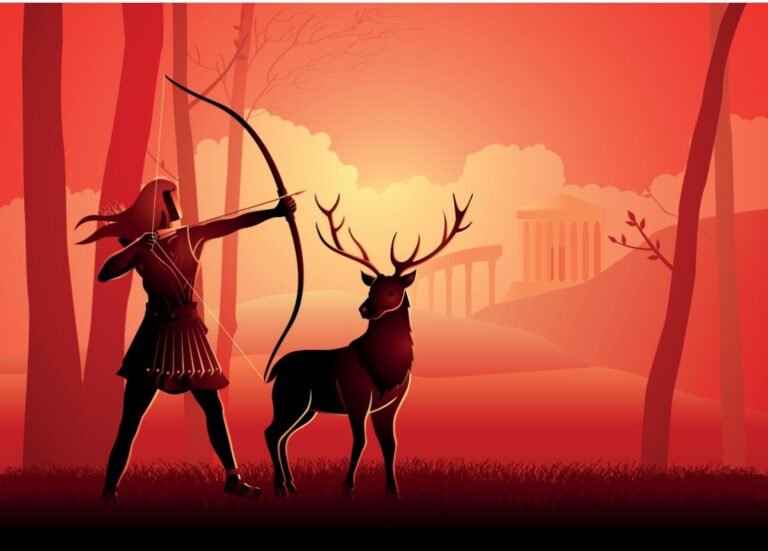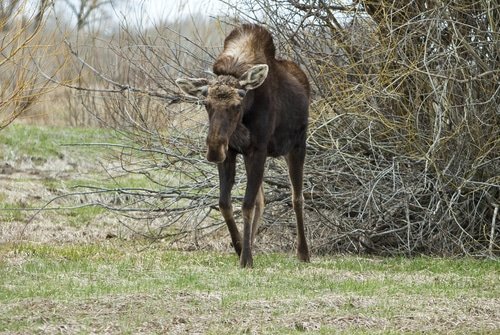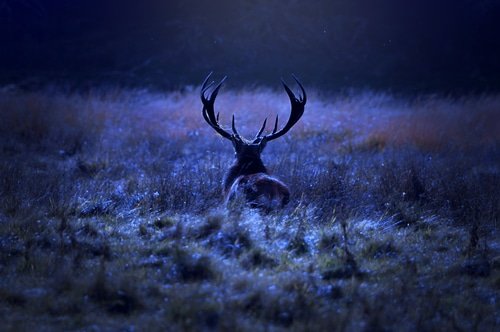When it comes to the deer family, there is one member that truly stands out among the rest: the mighty moose. These majestic creatures hold the prestigious title of being the largest species in their family, and boy, do they wear it well! In this blog, we will discuss the moose anatomy in detail.
Standing tall with their immense stature, moose never fail to leave a lasting impression on anyone fortunate enough to witness them in all their glory. A fully-grown male moose, known as a bull, can reach staggering heights of up to 7 feet at the shoulder.
Picture that for a moment – seven feet! That’s taller than most basketball players!
And let’s not forget about their sheer weight. These magnificent beasts can tip the scales at over 1,000 kilograms (or 2,200 pounds), making them heavyweights in the animal kingdom.
Their unique physical characteristics
Beyond their impressive size, moose possess various distinctive physical features that captivate nature enthusiasts and scientists alike. One defining characteristic that immediately catches attention is undoubtedly their antlers. The males sport these magnificent headpieces during specific times of the year.
Starting as small knobs covered in velvety skin called “velvet,” these antlers grow rapidly over a few months until they transform into massive branching structures with multiple points. These impressive antlers serve various purposes throughout a bull moose’s life – from attracting mates during mating season to asserting dominance during confrontations with other males.
Moreover, let’s talk about those gangly legs! Moose have long limbs perfectly adapted to traverse various terrains such as forests and wetlands.
With each step, these limbs carry them gracefully through challenging landscapes where many other animals might struggle. So there you have it – an introduction to the fascinating world of moose anatomy.
From their astounding size to their unique physical characteristics, these creatures embody nature’s design’s magnificence. As we venture further into this captivating article, prepare for a deeper dive into the intricate details of moose body structure and physical features.
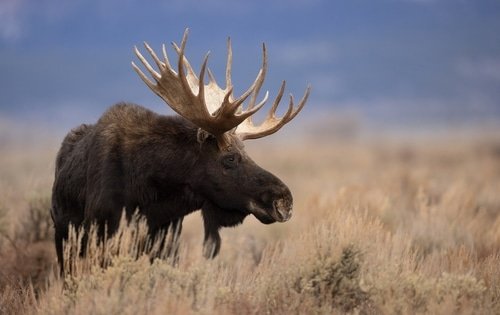
Head and Antlers
Elaboration on the impressive antlers and their growth process
Their antlers are truly a sight to behold when it comes to moose. These magnificent appendages are not only impressive in size but also in the intricate process of their growth. A male moose, known as a bull, will develop antlers yearly for mating purposes and territorial displays.
It all begins with the growth of bony structures called pedicles on their skull. Once the pedicles are formed, soft tissues that contain blood vessels start to cover them, eventually transforming into what we recognize as the velvet-covered antlers.
As summer progresses and testosterone levels rise, the bull’s antlers grow rapidly. It’s fascinating that these antlers can grow up to an inch a day!
The velvet covering nourishes the growing bone beneath it, supplying essential nutrients through blood vessels. When autumn arrives, hormones cause a decrease in blood flow to the velvet, resulting in its shedding.
The bull then rubs his antlers against trees and shrubs to remove any remaining velvet and reveal the hard, bony structure underneath. This signals that mating season is near and showcases his dominance to potential rivals.
Description of the head shape and its adaptation to feeding
A moose’s head is uniquely shaped and designed for efficient feeding in its natural habitat. It features a long snout with a prehensile upper lip that works like a grasping tool when browsing vegetation.
This specialized muzzle allows them to pluck leaves from branches or strip bark off trees with relative ease. Additionally, moose have an interesting adaptation called “bell,” which refers to a flap of skin hanging under their throat region.
This bell can be large on older males and amplifies during vocalizations such as mating calls. It helps the sounds carry long distances, ensuring potential mates or rivals can hear their impressive vocal displays.
Body Structure
Discussion on the massive size and weight of moose
Moose are renowned for their sheer size and weight, making them one of the largest land mammals in North America. Adult males, also known as bull moose, can weigh anywhere between 1,200 to 1,600 pounds (540 to 725 kilograms), while females, known as cow moose, generally weigh slightly less but remain formidable in size. Their robust bodies are a testament to their ability to withstand harsh winters and navigate through dense forests.
The immense bulk of a moose serves various purposes. It aids in attracting mates during breeding season by showcasing physical dominance over rivals.
Additionally, their large size acts as a deterrent against predators such as wolves or bears. Moose may appear slow-moving at times due to their vast proportions; however, they can reach impressive speeds of up to 35 miles per hour (56 kilometers per hour) when necessary.
Explanation of their long legs and how they aid in movement
One notable feature contributing to a moose’s mobility is its long legs. These elongated limbs allow them to navigate various terrains with relative ease. Whether wading through marshes or traversing deep snows during winter, their leg length provides an advantage in maneuverability.
Moreover, the joints and muscles in moose legs are exceptionally strong and flexible. This allows them to run swiftly or jump over obstacles when needed while conserving energy for long distances traveled during migration or searching for food sources.
Fur and Coloration
Detailing the thick, shaggy fur that protects them from cold temperatures
Moose have a thick, shaggy fur coat that acts as natural insulation, providing essential protection against the frigid temperatures of their native habitats. This dense layer of fur consists of two types of hair: long guard hairs and shorter, softer underfur.
The combination of these hairs creates an effective barrier against the cold. The outer guard hairs are long and stiff, helping to repel moisture such as rain or snow.
Meanwhile, the underfur is an insulating layer by trapping air close to the moose’s body, creating a warm buffer zone. This adaptive fur coat allows moose to withstand temperatures as low as -40 degrees Fahrenheit (-40 degrees Celsius) during harsh winters.
Insight into their dark brown coloration, blending with their environment
Moose exhibit a distinct dark brown coloration that blends seamlessly with their forested surroundings. Their earth-toned hue provides excellent camouflage against predators such as wolves or bears, allowing them to hide in plain sight amidst trees and foliage. This dark brown color serves both protective and deceptive purposes.
Not only does it help them evade potential threats by camouflaging effectively within their environment, but it also absorbs sunlight efficiently. As a result, moose can warm up more quickly when exposed to direct sunlight—a valuable advantage during colder months when sunrays are limited.
Moose possess remarkable external features that are finely tuned for survival in diverse habitats. From their impressive antlers and head adaptations for feeding to their massive body structure and long legs aiding in movement—each aspect plays a crucial role in the life of these majestic creatures.
Furthermore, their thick, shaggy fur insides against extreme cold, while their dark brown coloration ensures effective camouflage within forested landscapes. Understanding these remarkable physical traits enhances our appreciation for these magnificent animals and allows us to fathom how they have adapted to thrive in challenging environments.
Skeletal System: Strong Bones and Elongated Limbs
When it comes to moose anatomy, their skeletal system is truly fascinating. Moose possess a robust framework that allows them to carry their massive weight easily.
Their bones are incredibly strong, designed to support the hefty muscle mass and withstand the rigors of their environment. A moose’s long and sturdy legs have evolved to adapt to traverse various terrains, such as marshes and deep snow.
These elongated limbs provide them with stability and agility, enabling them to move swiftly through dense forests or vast open spaces. The bones of a moose are impressive in their structure.
Made up of dense cortical bone surrounded by spongy cancellous bone, they are well-adapted to daily stresses. An interesting fact about moose antlers is that they, too, are composed of bone!
Antlers are unique in that they grow rapidly yearly and then shed during winter, only to regrow again larger than before. This remarkable process requires abundant calcium and other minerals from the moose’s diet to fuel antler growth.
Muscular System: Powerhouse for Swift Movements
Moose muscles deserve admiration for the sheer power they possess. These majestic creatures have well-developed muscles, allowing them to move swiftly when necessary.
Their muscular system is particularly remarkable in their massive shoulder area, which enables them to charge forward with surprising speed when threatened or during mating season battles. In addition to generalized strength, moose have specialized muscles that cater to certain activities like swimming.
Their hindquarters hold strong muscles that aid them in effortlessly navigating bodies of water. When a moose takes a dip in lakes or rivers – which they often do during summer months – these powerful muscles propel them forward gracefully, making swimming appear almost effortless despite their massive size.
Respiratory System: Lungs for Endurance
Moose lungs are another remarkable feature of their anatomy. Adapted to their active lifestyle, moose possess lungs with an impressive capacity to hold large amounts of air. This adaptation ensures that moose can endure prolonged physical exertion, such as running or fighting off predators.
With every breath, their lungs work diligently to provide oxygen-rich air to the muscles, allowing them to easily sustain their activities for extended periods without tiring. Moose also benefit from this exceptional lung capacity during winter when they must traverse through deep snow.
The extra air in their lungs provides the necessary buoyancy as they move through the snow-covered landscapes. It’s truly amazing how these physiological adaptations play a crucial role in the survival and success of moose in their natural habitats.
As we delve deeper into understanding moose anatomy, it becomes evident that every aspect of their internal systems is perfectly designed for survival and thriving in their environment. From strong bones and elongated limbs to powerful muscles and efficient respiratory systems, these magnificent creatures are a testament to evolution’s brilliance.
Mouth, Teeth, and Tongue
Moose have a fascinating way of feeding on vegetation due to their unique mouth structure. They use their upper lip as a specialized tool to grasp plants and pull them directly into their mouth. This upper lip is long and flexible, allowing it to reach deep into bushes or grasp plants growing in shallow water bodies.
It acts like a built-in pair of tongs, allowing moose to gather food from their surroundings efficiently. When chewing tough plant material, moose rely on their dental adaptations.
Their teeth are well-suited for grinding down vegetation that other animals struggle with. Moose have wide incisors at the front of their mouth that help cut through plants quickly.
Additionally, they possess large premolars and molars with ridged surfaces that aid in effective grinding. These dental adaptations allow moose to process fibrous plant matter, such as twigs and bark, which are important diet components during certain seasons.
Gastrointestinal Tract
The gastrointestinal tract of a moose is quite remarkable and plays a crucial role in breaking down the tough plant material they consume. Like other ruminants, moose have a four-chambered stomach that helps facilitate an efficient digestion process.
The first chamber is called the rumen, where food initially goes for microbial fermentation—a vital step for breaking down cellulose found in plant cell walls. After being partially digested in the rumen, the food undergoes regurgitation, where it is rechewed before entering the second chamber called the reticulum.
From there, it moves into the omasum, where water absorption occurs before finally reaching the abomasum—the true stomach—where enzymatic breakdown takes place. This specialized digestive system allows moose to extract maximum nutrients from the large quantities of vegetation they consume daily while processing complex compounds like cellulose effectively.
Conclusion
Understanding the intricate details of moose anatomy, including their unique mouth structure and dental adaptations, provides a glimpse into the remarkable ways these magnificent creatures have evolved to thrive in their natural habitats. The moose’s ability to use its upper lip as a grasping tool and its specialized teeth for grinding tough plant material showcase the incredible adaptability of nature’s designs.
Furthermore, the four-chambered gastrointestinal tract of moose demonstrates how they have developed an efficient means of digesting fibrous vegetation. These adaptations collectively contribute to the moose’s ability to sustain themselves on a diet primarily of plants.
By delving into these aspects of moose anatomy, we gain a deeper appreciation for their physical features and body structure. It reminds us of the intricate beauty that exists in nature and encourages us to cherish and protect these magnificent creatures and their habitats.

